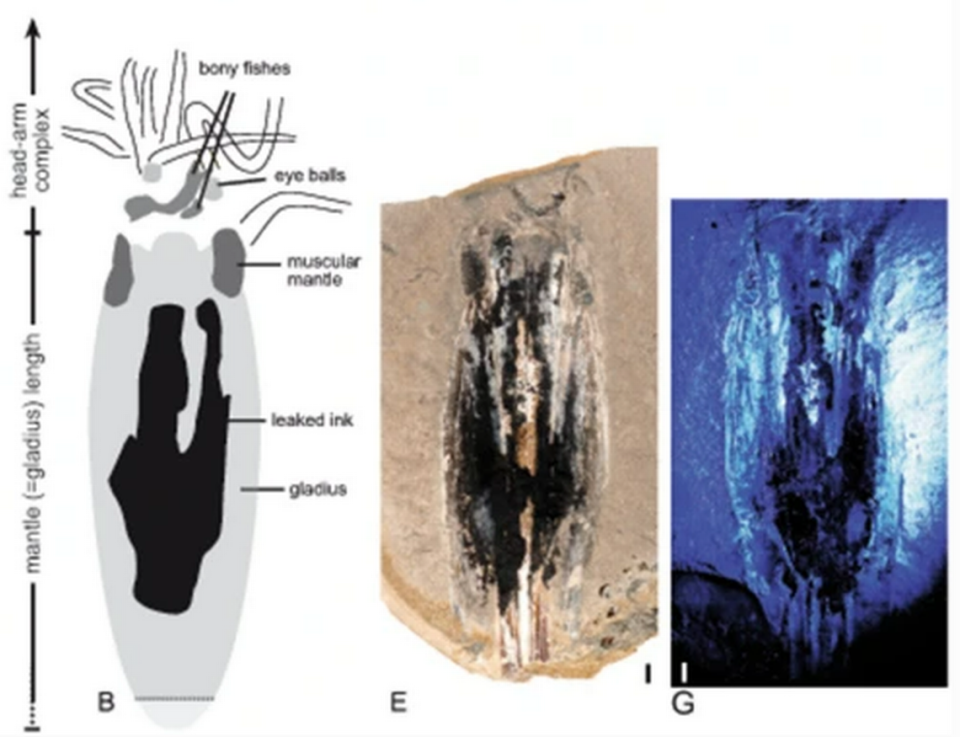Deep-sea vampire squid suffocated 183 million years ago while hunting. Now it’s found
Some 183 million years ago, an eight-armed creature drifted through the shallow waters off of an island that would now be in the heart of Europe.
The sea creature was hunting for prey. But as it wrestled two bony fish into its arms, it failed to realize it was sinking into the low-oxygen depths of the sea.
By the time it noticed what was happening, it was too late. The predator suffocated — with its prey in its arms — and sunk to the seafloor where it was buried.
For tens of millions of years, the animal stayed where it was, slowly fossilizing as it became embedded in the seafloor.
That is until recently, when paleontologists in Luxembourg unearthed the fossil and realized it was a new, never-before discovered species of deep-sea vampire squid, according to a study published Feb. 14 in the Swiss Journal of Palaeontology.

Discover more new species
Thousands of new species are found each year. Here are three of our most eye-catching stories from the past week.
→ Spiky creature — with 'bent' toes — found in cliffs of Vietnam
→ 'Distinct' creature — marked with an 'X' — found lurking in China
→'Robust' color-changing creature lays its eggs in foamy nests
The remains were found at a dig site in Bascharage in 2022, researchers said in a Feb. 27 news release. The fossil was in “excellent” condition and included the “complete specimen.”
But the “exceptional” discovery didn’t stop there.
Researchers found another “surprise” while examining the squid: the remains of two boney fish found near the squid’s mouth, situated between “two greyish eyeballs.”
The new species is known as Simoniteuthis michaelyi. It’s named after the scientific volunteer coordinator at the National Museum of Natural History Luxembourg, Jo Simon, and the museum’s director, Patrick Michaely, according to the study.

“We were specifically aiming at exceptionally preserved fossils like the vampire squid specimen,” Ben Thuy, one of the study’s co-authors and a curator at the museum, told McClatchy News in an email. “However, the fact that the specimen shows so much detail and also preserves the animal’s last prey frozen in time was a total surprise.”
Vampire squid are known for their “bioluminescent organs and long retractable filaments.” While they resemble squid, the cephalopods are actually more closely related to octopuses, experts said.
Scientists said the new, ancient species is missing a fifth pair of arms that other similar species have. Instead, only eight arms are visible in the fossil.
Its gladius — the hard interior shell at the top of its body — measured about 9 inches long, but leaked ink inhibited a full reconstruction, researchers said.
The squid likely died in a phenomenon known as “distraction sinking.” Experts believe the creature got distracted while hunting and sank to hostile depths where it suffocated.
Luxembourg borders Belgium, Germany and France.
‘Large’ colorful creature — last seen 85 years ago — rediscovered. See ‘rare’ find
Winged ‘fairy’ creature preserved inside amber belongs to ‘enigmatic’ new species
‘Large’ metallic creature — thought extinct for 100 years — rediscovered on island

